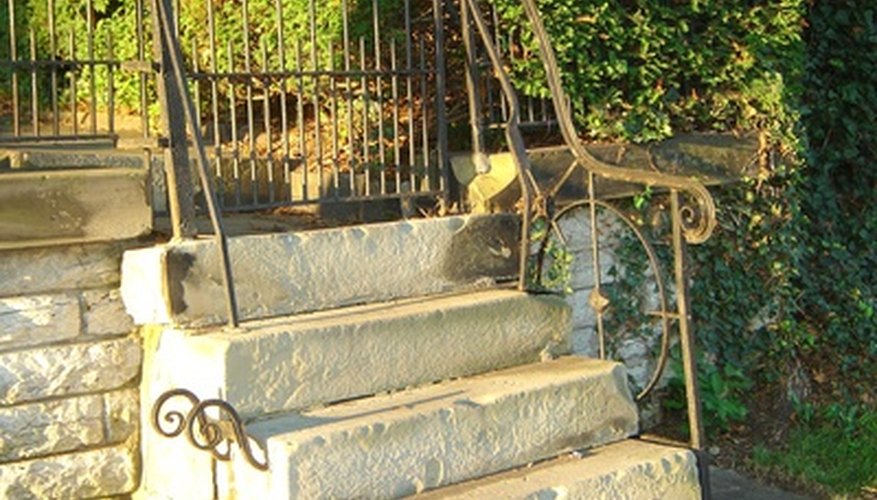Precast concrete stairs are a simple way to install an exterior staircase to a doorway. With their prebuilt steps and stoop all in one piece, they can be installed in less than 30 minutes with the right equipment and require little maintenance. However, there are some major disadvantages to precast exterior stairways that far outweigh the benefits.
Settling
Precast concrete stairs are very heavy and are often placed on the soil right after construction is completed on a home. The stairs often settle, creating uneven stairs to travel up and down and creating a trip hazard. The stairs also move independently of the house, which means that the stairs could move away from the house, toward the house, up, down, left, right; the possibilities are endless.
- Precast concrete stairs are a simple way to install an exterior staircase to a doorway.
- Precast concrete stairs are very heavy and are often placed on the soil right after construction is completed on a home.
Repairing Damage
Repairing damaged precast concrete steps are almost impossible. There are no other structural elements within the concrete, so once the concrete cracks, the crack continues to seriously jeopardise the structural integrity of the steps.
Foundation and Exterior Surface Damage
As the precast concrete steps move from year to year, the steps bounce off the foundation and the threshold of the door, causing foundation damage and putting pressure on the door framing. This movement can cause substantial damage that costs significantly more than simply replacing the stairs with a solid wooden staircase attached to the house.
Railing Attachment
Railings are desirable for safety reasons, and they are supposed to be able to support 90.7kg. of pressure. Precast steps, however, cannot sufficiently be supported by lateral pressure, making it generally unsafe to install railings on them.
